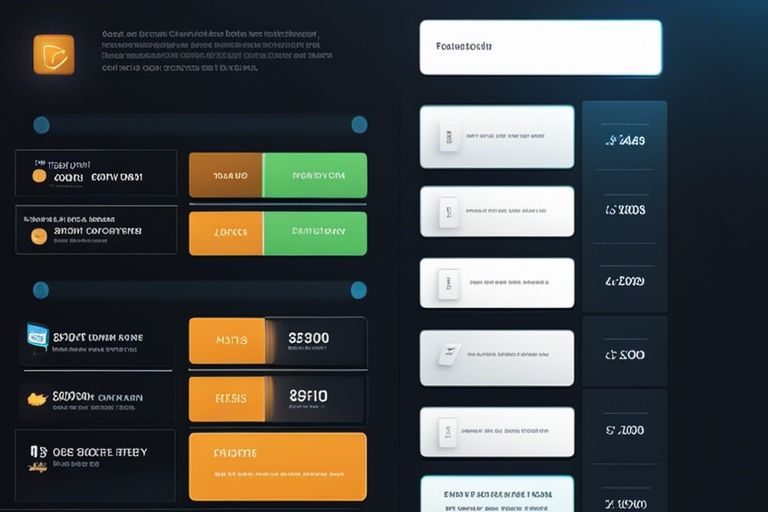Payment Integration – A Technical Overview

Technical complexities are crucial in understanding #payment integration, an necessary component of #e-commerce platforms. This integration allows websites and applications to securely process transactions from customers. Ensuring a seamless and secure payment process is paramount for any #onlinebusiness, as it directly impacts customer satisfaction and trust.
Understanding Payment Integration
Definition and Key Concepts
The world of payment integration is a complex and rapidly evolving ecosystem that plays a crucial role in enabling online transactions. Payment integration refers to the process of connecting a merchant’s website or application with a payment gateway to facilitate the secure processing of payments. It involves the seamless transfer of transaction data between the customer, merchant, payment gateway, and financial institutions.
Evolution of Payment Systems
The evolution of payment systems has been driven by advancements in technology and changing consumer preferences. From traditional cash transactions to the rise of credit/debit cards and now the dominance of digital wallets and contactless payments, the landscape continues to shift. Understanding the history and development of these systems is vital for businesses looking to stay relevant in an increasingly digital world.
A key driver of this evolution has been the need for secure and efficient payment methods that meet the demands of a global economy. As transactions become more diverse and complex, the role of payment integration in ensuring a smooth and secure process becomes even more critical.
Types of Payment Methods
Little payment integration is complete without an understanding of the different types of payment methods available to consumers. From traditional methods to online and mobile payment systems, it is crucial for businesses to offer a variety of options to cater to their customers’ preferences.
| Traditional Payment Methods | Online and Mobile Payment Systems |
| Bank Transfers | Credit Card Payments |
| Cash Payments | Mobile Wallets |
| Cheques | Online Bank Transfers |
| Money Orders | Peer-to-Peer Payment Apps |
| Electronic Benefit Transfers | Cryptocurrency |
Traditional Payment Methods
With the rise of online shopping, traditional payment methods such as cash payments, cheques, and money orders have become less common. However, bank transfers and electronic benefit transfers still play a significant role in financial transactions for certain demographics. Businesses catering to a wide range of customers may still need to accommodate these methods to ensure they do not exclude anyone from making a purchase.
The shift towards online and mobile payment systems has revolutionized the way transactions are conducted. With the convenience of credit card payments, mobile wallets, and peer-to-peer payment apps, consumers can make purchases with just a few clicks on their smartphones. However, it is important for businesses to stay updated on the latest payment technologies to provide a seamless checkout experience for their customers.
Online and Mobile Payment Systems
Payment integration is incomplete without considering the various online and mobile payment systems available in the market. For instance, cryptocurrency has gained popularity for its decentralization and security features, but businesses need to carefully evaluate the risks associated with volatile prices. Peer-to-peer payment apps offer convenience but may pose security concerns if not properly safeguarded. It is crucial for businesses to balance innovation with security measures to provide customers with a safe and efficient payment experience.
The evolution of payment methods continues to shape the way businesses operate, and it is imperative for companies to adapt to these changes to remain competitive in the market.
Payment Gateways
Role of a Payment Gateway
Payment gateways play a crucial role in facilitating online transactions by acting as a bridge between merchants and financial institutions. They securely transmit payment information between the customer, merchant, and the payment processor, ensuring that sensitive data is protected during the transaction process. In essence, a payment gateway authorizes the payment and enables funds to be transferred from the customer’s account to the merchant’s account.
Criteria for Selecting a Payment Gateway
An imperative factor to consider when selecting a payment gateway is its security features. It is imperative to choose a payment gateway that complies with industry standards and regulations to protect both the customer’s sensitive data and the merchant’s reputation. Additionally, compatibility with the merchant’s e-commerce platform, ease of integration, transaction fees, and customer support are key factors to evaluate when choosing a payment gateway.
Gateways vary in terms of features, supported payment methods, geographical coverage, and level of customer service. Merchants should carefully consider their specific business needs and target audience to select a payment gateway that aligns with their requirements. Making an informed decision based on these criteria is imperative to ensuring a seamless payment experience for customers and optimizing revenue for the merchant.
Security Considerations
Encryption and Data Protection
To ensure secure payment integration, it is vital to employ strong encryption protocols and robust data protection measures. Encryption helps to safeguard sensitive information by encoding data during transmission, making it unreadable to unauthorized parties. Implementing end-to-end encryption ensures that data remains secure throughout the entire payment process, reducing the risk of interception or tampering.
Compliance with Security Standards
To maintain the highest level of security in payment integration, it is imperative to comply with established security standards such as PCI DSS (Payment Card Industry Data Security Standard). Adhering to these standards helps to protect customer data and prevent data breaches. By following best practices and regulatory requirements, businesses can instill trust and confidence in their payment process.
A key aspect of compliance with security standards is regular security assessments and penetration testing. These ensure that potential vulnerabilities are identified and addressed proactively, strengthening the overall security posture of the payment integration system.
Payment Integration APIs
Overview of API-based Integration
All modern online payment systems allow merchants to integrate payment processing functionality into their websites or applications using Payment Integration APIs. These APIs facilitate seamless communication between the merchant’s platform and the payment gateway, enabling secure and efficient transfer of payment information. The integration process typically involves the merchant accessing the API documentation provided by the payment service provider, incorporating the necessary code into their platform, and implementing the required security protocols.
Examples of Popular Payment APIs
On the market today, there are multiple Payment Integration APIs available, each offering unique features and capabilities. Some of the most popular payment APIs include PayPal, Stripe, Braintree, and Square. These APIs enable merchants to accept a wide range of payment methods, including credit and debit cards, digital wallets, and bank transfers. Integration with these APIs can enhance the customer experience by providing a smooth and secure payment process.
API-based payment integration can significantly streamline the checkout process for customers, leading to higher conversion rates and increased revenue for merchants. However, it is crucial for businesses to choose reputable payment APIs with robust security measures in place to protect sensitive customer data. By leveraging these APIs effectively, merchants can expand their customer base and establish trust and credibility in the competitive online market.
Implementation Strategies
Despite the benefits of implementing a payment integration system, it is crucial to have a well-thought-out plan in place. This ensures that the integration goes smoothly and meets all the desired objectives. Planning and budgeting are vital elements of the implementation process that should not be overlooked.
Planning and Budgeting
For a successful payment integration implementation, it is important to start with a detailed plan that outlines the scope of the project, timelines, resources needed, and potential challenges. This plan should also include a budget that accounts for all costs, such as software development, integration fees, and any additional resources required. By carefully planning and budgeting for the implementation, you can avoid unexpected roadblocks and ensure a successful integration.
Testing and Quality Assurance
On the testing and quality assurance front, it is crucial to have a dedicated team in place to thoroughly test the payment integration system. This team should conduct various tests to ensure that the system functions as intended, is secure, and provides a seamless user experience. Testing and quality assurance are vital components of the implementation process as they help identify any issues or bugs before the system goes live, thereby reducing the risk of errors that could impact the user experience or compromise security.
To ensure a successful payment integration implementation, it is important to allocate sufficient time and resources to testing and quality assurance. By thoroughly testing the system and addressing any issues that arise, you can launch a reliable and secure payment integration that meets the needs of your business and customers.
Key Challenges and Solutions
Handling Payment Failures
Your payment system must have robust mechanisms in place to handle payment failures effectively. Solutions such as real-time error detection, intelligent retries, and clear error messages can help mitigate the impact of payment failures. It is crucial to provide users with helpful instructions on what went wrong and how to resolve the issue to ensure a seamless payment experience.
Internationalization and Currency Conversion
Solutions for internationalization and currency conversion challenges include adopting a multi-currency payment gateway, supporting various payment methods specific to different regions, and displaying prices in the local currency. By implementing these solutions, businesses can cater to a global audience, improve user experience, and increase conversion rates.
For seamless international transactions, it is vital to consider factors like exchange rates, cross-border fees, and compliance with local regulations. By carefully addressing these aspects, businesses can offer a frictionless payment experience to customers worldwide and expand their market reach.
Trends and Future of Payment Integration
Impact of Emerging Technologies
For years, emerging technologies like artificial intelligence, blockchain, and biometric authentication have been reshaping the landscape of payment integration. These technologies have significantly impacted the way transactions are conducted, providing more secure and efficient methods for processing payments. AI-powered systems enable fraud detection in real-time, while blockchain ensures transparent and immutable transaction records. Biometric authentication adds an extra layer of security, making payment processes frictionless for users.
Predictions for Payment Integration Developments
On the horizon, we foresee a continued proliferation of mobile payment solutions, as more consumers embrace the convenience of contactless transactions. Additionally, the Internet of Things (IoT) will play a more significant role in payment integration, allowing for seamless payments in connected devices. Voice-activated payments and virtual reality commerce are also expected to gain traction, offering novel ways for consumers to interact with merchants and make purchases online.
Payment integration is evolving at a rapid pace, driven by changing consumer preferences and advancements in technology. As businesses strive to meet the demands of a digital-first world, integrating innovative payment solutions will be crucial for staying competitive. The ability to adapt to these changes and embrace new technologies will be imperative for businesses looking to provide convenient, secure, and personalized payment experiences for their customers.
Conclusion
Taking this into account, payment integration plays a crucial role in ensuring seamless transactions for businesses and their customers. By understanding the technical aspects of payment integration, businesses can make informed decisions on selecting the right payment gateway and strategies to optimize their payment processes.
It is imperative for businesses to stay updated on the latest trends and technologies in payment integration to provide a secure and convenient payment experience for their customers. By implementing best practices and leveraging advancements in payment technology, businesses can streamline their payment processes and enhance customer satisfaction, ultimately contributing to their overall success in the digital marketplace.
FAQs
What is payment integration?
Payment integration refers to connecting a merchant’s website or app with a payment gateway to process transactions securely.
Why is payment integration important?
It ensures a seamless checkout experience, enhances security, and builds customer trust in online transactions.
What are the types of payment methods available?
They include traditional methods like bank transfers, and modern options such as credit cards, mobile wallets, and cryptocurrencies.
What role do payment gateways play?
Payment gateways facilitate the transfer of payment data between customers, merchants, and financial institutions securely.
How can businesses select the right payment gateway?
Consider security features, compatibility with platforms, transaction fees, and customer support when choosing a payment gateway.
Recommended Posts

Crypto Casinos: Bitcoin Impact on Online Gambling
July 5, 2024

The Path to Payment Efficiency in iGaming
July 5, 2024

Cryptocurrency Investment Strategies in Malta
July 4, 2024




